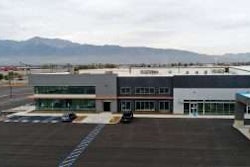Finding quality employees is the largest single challenge facing the trucking industry today. In our market, we cannot stop talking about technicians — how important they are, how many we need, how many we can’t seem to find — and in the fleet world the driver conversation is almost beat-for-beat identical.
But for all the years trucking’s employee shortage has existed, our channel has always had one key feature we could promote that the fleet community couldn’t: a technician gets to go home when his shift ends. Trucking may be becoming more regional and there might be less coast-to-coast routes than there used to be, but compared to the steady (and stationary) job of a technician, driving a truck has always been a harder sell.
Until now … maybe.
Earlier this week The Wall Street Journal published a report detailing how the companies on the forefront of the autonomous driving revolution are relying on remote drivers — employees working from a central office hub — to fill in as emergency drivers in situations where the technology in autonomous automobiles is confused or perplexed by a situation on the road.
In the article, the paper states companies like Waymo, Uber, General Motors, Nissan and upstart Phantom Auto are all “developing ways for people to remotely assist their autonomous vehicles during complicated driving situations.”
The reason is obvious, and exactly what you’d guess: despite the incredible technology installed on these cars to allow them to monitor and observe the world around them, they are not infallible. There are instances where the computers are not programmed to, or are unable to, properly identify a hazard. And when those instances occur, the companies who own these vehicles are turning to good old-fashioned human intervention — with perfectly modern twist.
GM and Waymo have programmed their vehicles to seek a safe location when in need of assistance so a person back at a central communications hub can “plot out a suggested alternative path to avoid the obstacle, according to the companies,” the newspaper reports.
Phantom Auto is going even further, the report says, building its cars with remote override capabilities. This means every time a vehicle’s computer system is confused, a ‘driver’ at the company’s facility can step in and drive the vehicle through the situation until it is again safe for the computer system to take over.
Admittedly, the autonomous-auto world is considerably different from our industry. Taking a compact sedan through a construction zone is not remotely as difficult as a 53-ft. rig, and yet I can’t help but wonder, will this type of driving ever hit trucking? Could this be a reality for us in 25 or 30 years?
I don’t know the answer. I don’t know if the technology exists that could make this level of intervention possible, or even if fleets would want to try. You just know none of this is cheap. But I do know the driver shortage is not going away. (Industry turnover was 94 percent during the first quarter of 2018). And I do know time away from home and family has always been a hiring roadblock for fleets.
If a national fleet could rely on a dozen remote drivers instead of 100 actual ones to pilot its most isolated, low-traffic and rural routes, would it be worthwhile? One thing is for sure, it would be a heck of a lot easier to sell to prospective employees than dorm room on wheels.












